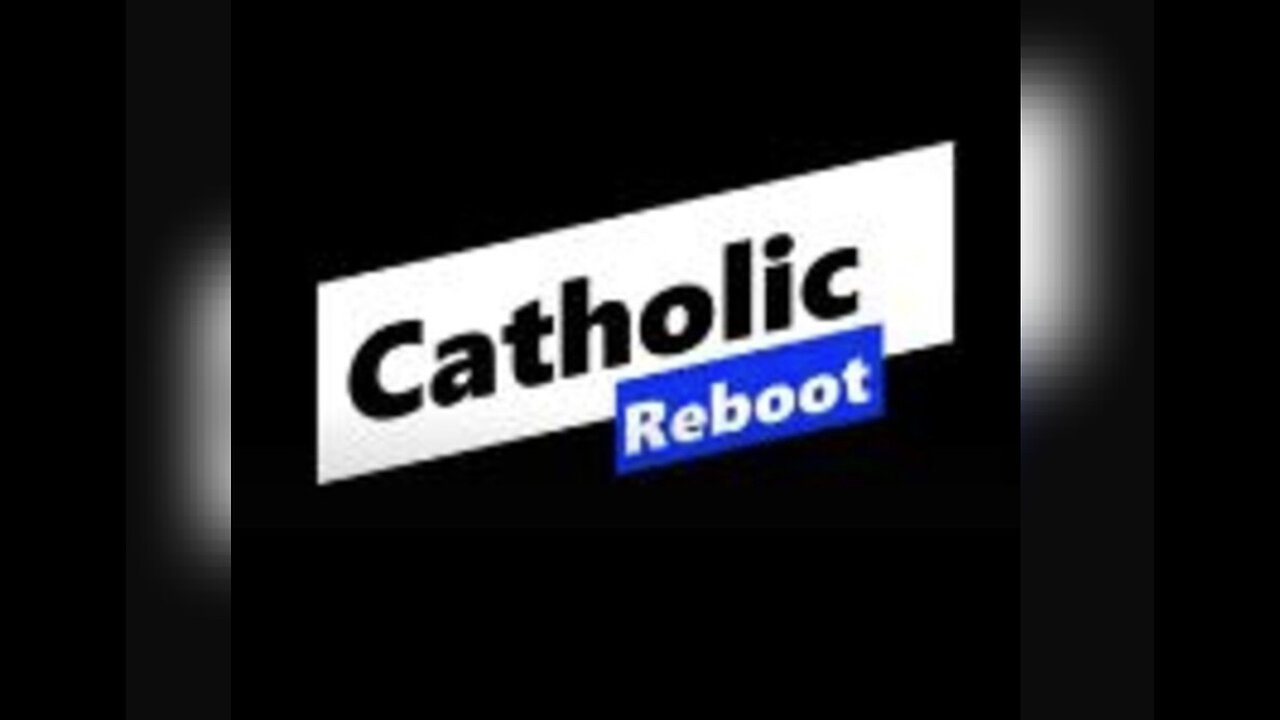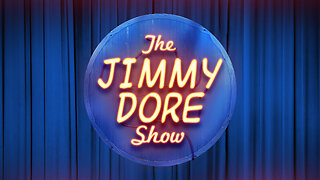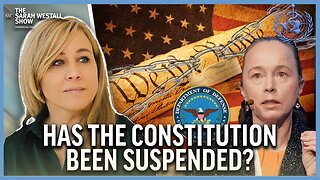Premium Only Content

Episode 1651: Celebration of Life or Prayers for the Soul?
You will notice that people are not having funeral masses for the beloved but rather from Wake to Grave or Wake to nothing and a month or so later you receive an invite for “The Celebration of Life”.
You know me, I have to bring the receipts (evidence) of my position. According to a 2019 report by the Center for Applied Research in the Apostolate (CARA), the percentage of Catholics in the United States who have funeral Masses has been declining for several decades. In 1960, 93% of Catholics had a funeral Mass. By 2017, that number had fallen to 63%.
This means that in 2017, there were about 39 million Catholics in the United States, and of those, only about 24 million had a funeral Mass. This represents a decline of about 15 million people over the past 57 years.
There are a number of factors that are contributing to this decline, including:
The increasing popularity of cremation: In 1960, only 5% of Catholics were cremated. By 2017, that number had risen to 48%. Cremation is often seen as a more affordable and environmentally friendly option than traditional burial.
The decreasing religiosity of Catholics: In 1960, 75% of Catholics attended Mass weekly. By 2017, that number had fallen to 20%. This decline in religiosity is also contributing to the decline in funeral Masses.
The rising cost of funerals: The average cost of a funeral in the United States is now over $9,000. This can be a significant financial burden for families, and it may lead them to choose a less expensive option, such as a cremation with no funeral Mass.
The decline in funeral Masses is a concerning trend for the Catholic Church. Funeral Masses are an important part of the grieving process, and they provide a way for Catholics to come together and pray for the deceased. The Church is working to reverse this trend by promoting the importance of funeral Masses and by making them more affordable.
Here are some of the things that the Church is doing to promote funeral Masses:
Offering financial assistance to families who cannot afford a funeral Mass
Providing educational resources on the importance of funeral Masses
Working with funeral homes to make funeral Masses more affordable
The Church also encourages Catholics to talk to their parish priest about their funeral wishes. The priest can help to plan a funeral Mass that is both meaningful and affordable.
So you may ask, why don’t you properly explain the COL.
The celebration of life at the death of someone is a relatively new tradition. It is believed to have originated in the United States in the early 20th century. The first known celebration of life was held in 1925 in honor of the death of Harvey Firestone, the founder of Firestone Tire and Rubber Company.
The celebration of life is a way to honor the life of the deceased and to celebrate their memory. It is often a more personalized and informal event than a traditional funeral. The celebration of life may include a variety of activities, such as:
Sharing memories of the deceased
Playing music that the deceased enjoyed
Watching videos or photos of the deceased
Engaging in activities that the deceased loved
Planting a tree or donating to a charity in the deceased's name
The celebration of life can be a healing experience for the bereaved. It can help them to process their grief and to find closure. It can also be a way to connect with other people who are grieving the loss of the deceased.
Here are some of the benefits of celebrating life at the death of someone:
It can help the bereaved to process their grief.
It can help the bereaved to find closure.
It can help the bereaved to connect with other people who are grieving the loss of the deceased.
It can be a way to honor the life of the deceased.
It can be a way to celebrate the memory of the deceased.
If you are considering having a celebration of life for a loved one, there are a few things to keep in mind:
The celebration should be held at a time and place that is convenient for the bereaved.
The celebration should be personalized to reflect the life of the deceased.
The celebration should be inclusive of all who want to attend.
The celebration should be handled respectfully.
A celebration of life can be a meaningful way to honor the life of a loved one and to help the bereaved to heal.
There are some similarities between the celebration of life and Masonic ideology. Both the celebration of life and Masonic ideology emphasize the importance of honoring the deceased and celebrating their life. Additionally, both the celebration of life and Masonic ideology promote the values of brotherhood and community.
Some common elements of a celebration of life include:
Sharing memories: Family and friends gather to share stories and anecdotes about the deceased, highlighting their accomplishments, personality, and impact on their lives.
Music and readings: Music that was meaningful to the deceased is often played, and readings from poems, scripture, or other sources may be included.
Eulogy: A eulogy is typically delivered by a close friend or family member, providing a more personal reflection on the deceased's life and legacy.
Reception: A reception may follow the ceremony, allowing guests to mingle, socialize, and continue sharing memories of the deceased.
Ancient Viking Funerals
Ancient Viking funerals were steeped in symbolism and ritual, reflecting their pagan beliefs and worldview. The specific customs varied depending on the social status of the deceased, but some common elements included:
Ship burial: High-status individuals were often buried in elaborately decorated ships, symbolizing their journey to the afterlife. The ship was often burned along with the body, releasing the deceased's spirit into the heavens.
Grave goods: Valued possessions and personal items were often placed in the grave with the deceased, ensuring they had the necessary provisions for their afterlife journey.
Sacrifices: In some cases, animals or even slaves were sacrificed as part of the funeral rituals, appeasement to the gods and ensuring a safe passage for the deceased.
Feasting and celebration: Following the burial, a feast was held in honor of the deceased, providing an opportunity for the community to mourn, celebrate their life, and reaffirm their social bonds.
Similarities
Both the celebration of life and ancient Viking funerals share some common themes:
Honoring the deceased: Both ceremonies are centered on honoring the life of the deceased, celebrating their memory, and acknowledging their impact on those left behind.
Community gathering: Both provide a space for family and friends to gather, share memories, and find support during the grieving process.
Symbolic gestures: Both incorporate symbolic gestures, such as music, readings, or grave goods, to express respect and convey beliefs about the afterlife.
So why do I prov ide the similarities of COL and Viking funerals? Because in both cases they are of a human centric origin. Yu will notice our culture is returning to a more pagan culture especially with piercings and tattoos and the debauchery of life. We are regressing and Christ is allowing us to return where we began because he never suffers the fool. If you want man you got man.
The traditional Catholic Church views the celebration of life in place of a funeral Mass with some degree of caution. The Church believes that the funeral Mass is an important part of the grieving process and that it provides a way for the bereaved to come together and pray for the deceased. The Church also believes that the funeral Mass is a way to celebrate the life of the deceased and to give thanks for their life.
Here are some of the reasons why the Church believes that the funeral Mass is an important part of the grieving process:
The funeral Mass provides a way for the bereaved to come together and pray for the deceased.
The funeral Mass offers the bereaved the comfort of the Church's teachings and prayers.
The funeral Mass is a way to celebrate the life of the deceased and to give thanks for their life.
The funeral Mass can help the bereaved to find closure and to begin the process of healing.
If you are considering whether or not to have a funeral Mass for a loved one, please talk to your priest or deacon. They can help you to understand the Church's teachings on funerals and to make the decision that is best for you.
So today we transferred from Mass Cards with a picture of Christ, the blessed mother, or the saints with a prayer to a picture of the deceased without a prayer but a very secular thought about the deceased. In its substance it’s a form of humanism in a world engulfed in the human rather than the immortal soul.
This really tells a bigger story. Quo Vas! Where are you going? Why were we born? To Know to Love to Serve Our Lord or to know to love to serve each other.
Please reverse this trend and speak up to your families and discourage cremation and COL in place of a funeral mass. Increase the movement to extreme unction and save that soul if you can. Do you really think there is any good for the soul? Forget about how it helps you heal and help heal that soul if possible.
Now I know people will say “Come on Wal think about those left behind” and I will respond “Let the dead bury the dead.”
-
 1:28:21
1:28:21
Glenn Greenwald
4 hours agoRFK Jr. Hearing Reveals DC Pro-Pharma Consensus; Trump's Executive Order to Deport Student Protesters Criticizing Israel; Untangling DC Think Tank Funding & Influence | SYSTEM UPDATE #399
68.2K69 -
 LIVE
LIVE
The Jimmy Dore Show
3 hours agoLiz Warren DEFENDS Big Pharma At RFK Hearing! Trump Dismisses Concerns Over NJ Drones!
18,249 watching -
 DVR
DVR
Space Ice
5 hours agoSpace Ice & Redeye: Van Damme's The Quest: Pirates, Clowns, James Bond & Bloodsport
6.34K1 -
 59:57
59:57
The StoneZONE with Roger Stone
3 hours agoJ6 Martyr Enrique Tarrio Describes Inhumane Prison Conditions Ordered by Biden | The StoneZONE
7.39K -
 16:48
16:48
Tundra Tactical
2 hours agoAffordable Medical Gear From ACETAC SHOT Show 2025
3.58K1 -
 1:46:16
1:46:16
Redacted News
5 hours agoRFK CONFIRMATION: Kennedy goes to WAR with Big Pharma Democrats in Fiery Hearing | Redacted Live
129K309 -
 57:31
57:31
Candace Show Podcast
6 hours agoBREAKING! Taylor Swift Turns Against Blake Lively & Ryan Reynolds | Candace Ep 141
164K169 -
 1:04:59
1:04:59
Sarah Westall
3 hours agoRFK Jr Report, Constitution Suspended, War Time Procedures in Place, WHO Exit, DOD w/ Sasha Latypova
14.5K13 -
 1:56:37
1:56:37
Melonie Mac
7 hours agoGo Boom Live Ep 35!
28K9 -
 1:01:13
1:01:13
LFA TV
10 hours agoPRESIDENT TRUMP SIGNS LAKEN RILEY ACT | BASED AMERICA 1.29.25 6pm
42K6